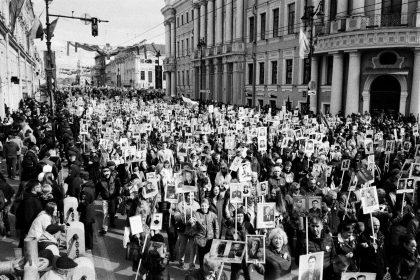Largest Peaceful Demonstration: 5 Keys to Historic Impact
Largest Peaceful Demonstration: 5 Keys to Historic Impact
Imagine a sea of people, united by a common cause, standing together in harmony, demanding change without a single act of violence. This powerful image defines the concept of the largest peaceful demonstration. Throughout history, such monumental gatherings have reshaped societies, challenged injustice, and left an indelible mark on the human story. But what truly makes a peaceful demonstration reach historic proportions, and how do organizers ensure its non-violent integrity amidst immense pressure? This article delves into the core principles, strategic planning, and enduring impact of the world’s most significant non-violent movements.
What Defines a Largest Peaceful Demonstration?
A demonstration’s scale isn’t solely about numbers; it’s about its ability to mobilize a diverse population, maintain strict adherence to non-violent principles, and ultimately influence public opinion or policy. These events are not spontaneous outbursts but often the culmination of meticulous planning and deep-seated societal grievances. Therefore, understanding their defining characteristics is crucial to appreciating their power.
Key elements that characterize a truly monumental peaceful demonstration include:
- Clear, Unifying Objectives: A concise message that resonates with a broad demographic, transcending individual differences.
- Broad and Diverse Participation: Engagement from various sectors of society, including different ages, professions, and social strata.
- Sustained Commitment: The ability to maintain momentum and participant resolve over extended periods, often in the face of adversity.
- Unwavering Non-Violent Principles: A core philosophy of peaceful resistance, even when provoked, ensuring the moral high ground.
Historical Precedents of Mass Civil Resistance
History is replete with inspiring examples of non-violent action that have driven profound change. These movements serve as powerful reminders of the effectiveness of collective peaceful resistance. From fighting colonial rule to advocating for civil rights, the power of people united has consistently proven formidable.
Some of the most iconic historical peaceful demonstrations and movements include:
- Mahatma Gandhi’s Salt March (1930): A pivotal act of civil disobedience against British salt laws in colonial India, mobilizing millions and galvanizing the independence movement.
- The American Civil Rights Movement (1950s-1960s): Led by figures like Martin Luther King Jr., this movement utilized boycotts, sit-ins, and marches to dismantle racial segregation and secure equal rights.
- The Fall of the Berlin Wall (1989): Peaceful protests across East Germany, particularly the Monday Demonstrations, played a critical role in the collapse of the communist regime and the reunification of Germany.
The Anatomy of a Monumental Peaceful Protest
Achieving the status of the largest peaceful demonstration requires more than just good intentions; it demands sophisticated organization, strategic communication, and an unshakeable commitment to non-violence. These movements are complex ecosystems, thriving on the dedication of countless individuals and meticulous planning.
Strategic Planning and Visionary Leadership
At the heart of any successful mass movement lies strategic planning. Organizers must articulate a clear vision, set achievable goals, and develop tactics that maximize impact while minimizing risks. Strong, ethical leadership is paramount, providing direction and inspiration to participants. This includes defining the message, identifying key targets for advocacy, and preparing participants for potential challenges. Furthermore, leadership often involves forging alliances with diverse groups to broaden the movement’s base and amplify its voice.
Grassroots Mobilization and Digital Reach
Mobilizing vast numbers of people requires effective communication and outreach. Historically, this involved word-of-mouth, pamphlets, and community meetings. Today, digital platforms have revolutionized the speed and scale of mobilization. Social media, encrypted messaging apps, and online organizing tools allow movements to reach millions globally, fostering a sense of collective identity and purpose. However, the human element—local organizers building trust and engaging communities face-to-face—remains indispensable for sustained participation.
Maintaining Non-Violence Under Pressure
Perhaps the most challenging aspect of any large peaceful demonstration is maintaining non-violence, especially when faced with opposition or provocation. Training in non-violent discipline is often crucial, preparing participants to respond peacefully to potential aggression. This commitment to non-violence not only preserves the moral authority of the movement but also garners broader public sympathy and international support. The strategic choice to remain non-violent can disarm opponents and highlight the stark contrast between the demonstrators’ intentions and any forceful suppression.
For more insights into the principles of non-violent action, explore resources from the International Center on Nonviolent Conflict.
Impact and Legacy: More Than Just Numbers
The true measure of a largest peaceful demonstration extends far beyond the sheer volume of participants. Its lasting impact is found in the societal shifts it precipitates, the awareness it generates, and the precedents it sets for future generations. These movements often serve as catalysts for profound change, even if immediate demands are not fully met.
- Policy Shifts and Legal Reforms: Successful movements can directly influence legislative changes and government policies, addressing the very issues they protest.
- Increased Public Awareness: They bring critical issues to the forefront of public discourse, forcing widespread acknowledgment and discussion.
- Cultural and Social Transformation: Beyond laws, these demonstrations can alter societal norms, challenge established power structures, and foster a more inclusive and just culture.
Lessons from the World’s Most Significant Peaceful Demonstrations
Studying these historical events provides invaluable lessons for activists, policymakers, and citizens alike. They highlight the power of collective action, the importance of strategic planning, and the enduring strength of non-violent resistance in the pursuit of justice and human rights. Understanding these dynamics is essential for anyone hoping to contribute to positive change.
To delve deeper into historical examples of civil resistance, consider exploring academic analyses on Stanford University’s Martin Luther King, Jr. Research and Education Institute.
The journey to becoming the largest peaceful demonstration is fraught with challenges, yet its potential for transformative change is immense. It requires unwavering commitment, meticulous organization, and a profound belief in the power of non-violence. These movements are not just events; they are pivotal moments in human history, demonstrating that the collective voice of a peaceful populace can indeed move mountains.
What do you believe is the most impactful element that allows a peaceful protest to achieve historic scale and lasting change? Share your thoughts in the comments below!
© 2025 thebossmind.com
Explore the defining characteristics, historical impact, and strategic elements that make a peaceful demonstration truly monumental. Uncover the secrets behind the largest peaceful demonstration and its power to reshape history.
Largest Peaceful Demonstration: 5 Keys to Historic Impact Featured image provided by…
Artificial Neural Networks: Unlocking 7 Key AI Innovations
Artificial Neural Networks: Unlocking 7 Key AI Innovations Artificial Neural Networks: Unlocking…
Neural Network: 7 Secrets to Master AI’s Core in 2025 –>
Suggested URL Slug: neural-network
Neural Network: 7 Secrets to Master AI’s Core in 2025
Imagine a world where machines learn, adapt, and even reason. This isn’t science fiction; it’s the reality being shaped by the incredible advancements in artificial intelligence. At the heart of this revolution lies the **neural network**, a computational model inspired by the human brain. Understanding its intricacies is no longer optional but essential for anyone looking to navigate or innovate in the modern tech landscape.
This comprehensive guide will demystify the **neural network**, exploring its foundational concepts, advanced architectures, and real-world applications. We’ll dive into specific models like the Gated Recurrent Unit and the Squeeze-and-Excitation model, revealing how they push the boundaries of AI performance. Get ready to unlock the secrets behind AI’s most powerful tool.
What is a Neural Network? The Foundation of Modern AI
A **neural network** is a series of algorithms that endeavors to recognize underlying relationships in a set of data through a process that mimics the way the human brain operates. In essence, it’s a powerful tool for machine learning, capable of identifying patterns and making predictions.
From Biological Inspiration to Digital Computation
The concept of a neural network stems from our understanding of biological neurons and their interconnected structure. Just as neurons in our brain communicate to process information, artificial neurons (nodes) in a network work together to solve complex problems.
This bio-inspired design allows these networks to learn from vast amounts of data without explicit programming for every scenario. Instead, they discover features and relationships independently, leading to remarkable breakthroughs in various fields.
Key Components of a Neural Network Explained
To truly grasp how a **neural network** functions, it’s vital to understand its core components. Each element plays a crucial role in the network’s ability to process information and learn effectively.
- Input Layer: This is where the initial data enters the network. Each node in this layer represents a feature of the input data.
- Hidden Layers: Positioned between the input and output layers, these layers perform most of the computational heavy lifting. They transform the input into something the output layer can use.
- Output Layer: This layer produces the final result of the network’s processing, whether it’s a classification, a prediction, or a generated output.
- Weights and Biases: These are parameters that the network learns during training. Weights determine the strength of the connection between neurons, while biases adjust the output of a neuron.
- Activation Functions: Applied at each neuron, these functions introduce non-linearity into the network, enabling it to learn complex patterns and relationships.
Exploring Advanced Neural Network Architectures
While basic feedforward networks are fundamental, modern AI often relies on more sophisticated architectures. These advanced models are designed to tackle specific challenges and achieve superior model performance, often outperforming traditional SOAT (state-of-the-art) methods.
The Power of Gated Recurrent Units (GRUs)
When dealing with sequential data like speech or text, standard neural networks often struggle to remember information over long sequences. This is where Recurrent Neural Networks (RNNs) and their specialized variants, like the Gated Recurrent Unit (GRU), come into play.
A GRU is a powerful type of RNN that effectively addresses the vanishing gradient problem, allowing it to capture dependencies across long sequences. It achieves this through “gates” that regulate the flow of information, deciding what to remember and what to forget. This makes GRUs particularly effective for natural language processing and time series analysis.
Enhancing Feature Learning with Squeeze-and-Excitation Models
For tasks involving image and video analysis, Convolutional Neural Networks (CNNs) are the go-to architecture. However, even CNNs can be further optimized. The Squeeze-and-Excitation (SE) model is a novel architectural unit designed to improve the quality of representations generated by CNNs.
SE models work by adaptively recalibrating channel-wise feature responses. They “squeeze” global spatial information into a channel descriptor and then “excite” each channel by learning a specific weight. This mechanism allows the network to focus on more informative features, significantly boosting performance in computer vision tasks. For a deeper dive into CNNs, you might find this Wikipedia article on Convolutional Neural Networks insightful.
Beyond Traditional Models: Why Advanced Networks Matter
The continuous development of advanced network architectures is crucial for pushing the boundaries of artificial intelligence. These innovations allow AI models to process more complex data, learn more nuanced patterns, and achieve higher accuracy in diverse applications.
From improving medical diagnoses to enhancing autonomous driving systems, the ability of these advanced networks to extract meaningful insights from vast datasets is unparalleled. They represent the cutting edge of AI innovation, driving progress across industries.
Practical Applications: Where Neural Networks Shine
The impact of the **neural network** extends far beyond academic research. Its versatility has led to transformative applications across numerous sectors, fundamentally changing how we interact with technology and solve real-world problems.
Revolutionizing Industries with Deep Learning
Deep learning, a subset of machine learning using multi-layered neural networks, is at the forefront of this industrial revolution. Its ability to learn from large amounts of data has unlocked capabilities previously thought impossible.
- Natural Language Processing (NLP): From translating languages to powering virtual assistants like Siri and Alexa, neural networks enable machines to understand, interpret, and generate human language with remarkable accuracy.
- Computer Vision: Facial recognition, object detection in self-driving cars, and medical image analysis are all powered by sophisticated neural network models that can “see” and interpret visual data.
- Robotics and Autonomous Systems: Neural networks provide robots with the intelligence to perceive their environment, learn tasks, and make decisions, leading to more adaptive and capable autonomous systems.
- Healthcare and Drug Discovery: AI models are accelerating the identification of new drugs, assisting in disease diagnosis, and personalizing treatment plans, leading to significant advancements in patient care.
Optimizing Neural Network Performance: Tips and Tricks
Building an effective **neural network** isn’t just about selecting an architecture; it also involves careful optimization. Achieving peak performance requires attention to detail throughout the development process.
Choosing the Right Architecture for Your Project
The success of your AI model often hinges on selecting the appropriate neural network architecture. Consider the nature of your data (sequential, image, tabular) and the specific problem you’re trying to solve. For instance, GRUs excel with sequential data, while CNNs are ideal for visual tasks.
Data Preprocessing and Augmentation Strategies
High-quality data is the lifeblood of any neural network. Effective data preprocessing, including cleaning, normalization, and feature scaling, is crucial. Additionally, data augmentation techniques can artificially expand your dataset, helping to prevent overfitting and improve generalization. You can explore more about deep learning research and applications on the DeepMind Research page.
Overcoming Challenges in Neural Network Training
Training neural networks can present several challenges, such as overfitting, underfitting, and slow convergence. Techniques like regularization (L1/L2), dropout, early stopping, and using optimized learning rate schedules are vital for overcoming these hurdles and achieving robust model performance.
The Future of the Neural Network: What’s Next?
The evolution of the **neural network** is far from over. Researchers are continually innovating, pushing the boundaries of what’s possible and exploring new frontiers in artificial intelligence.
Emerging Trends and Research Directions
Exciting areas of research include explainable AI (XAI), which aims to make complex models more transparent, and federated learning, which allows models to train on decentralized datasets while maintaining privacy. Furthermore, advancements in quantum computing could unlock entirely new paradigms for neural network design and training.
Ethical Considerations in AI Development
As neural networks become more powerful and integrated into our lives, ethical considerations gain paramount importance. Ensuring fairness, mitigating bias, and establishing responsible AI development practices are critical for building a future where AI benefits all of humanity.
Conclusion: Harnessing the Power of Neural Networks for Innovation
The **neural network** stands as a testament to human ingenuity, mimicking the very mechanisms of our own intelligence to solve some of the world’s most complex problems. From the foundational concepts to advanced architectures like GRUs and Squeeze-and-Excitation models, its capabilities continue to expand at an astonishing pace.
By understanding these powerful AI models and their applications, you are better equipped to contribute to the next wave of technological innovation. Embrace the journey into AI, and let the **neural network** be your guide to a future of limitless possibilities.
© 2025 thebossmind.com
Unlock the power of the neural network! Discover how advanced architectures like GRU and Squeeze-and-Excitation models are revolutionizing AI. Master deep learning fundamentals and future trends.
Image search value for featured image: abstract neural network connections brain illustration AI
“`
Neural Network: 7 Secrets to Master AI's Core in 2025
Urban Public Art Projects: 7 Ways They Transform Cities
urban-public-art-projects Urban Public Art Projects: 7 Ways They Transform Cities Urban Public…
Community Art Projects: 7 Creative Ways to Transform Your City
Community Art Projects: 7 Creative Ways to Transform Your City community-art-projects Community…
Philosophy: 7 Surprising Ways It Transforms University Life
philosophy-university-life Philosophy: 7 Surprising Ways It Transforms University Life Philosophy: 7 Surprising…
Neural Networks: 7 Mind-Blowing Ways They’re Transforming Our World
neural-networks Neural Networks: 7 Mind-Blowing Ways They're Transforming Our World Neural Networks:…
Photomicrography Competition: Unveiling Microscopic Wonders in 2025
Photomicrography Competition: Unveiling Microscopic Wonders in 2025 photomicrography-competition Photomicrography Competition: Unveiling Microscopic…
Build Your Dream Five-Fund Dividend Portfolio for Retirement
Discover how to build a resilient five-fund dividend portfolio designed for a…
The Largest Denomination US Currency Bills Ever Made
$gt; $gt; **US Currency Bills: The Largest Denominations Ever Issued** $gt; $gt;…








